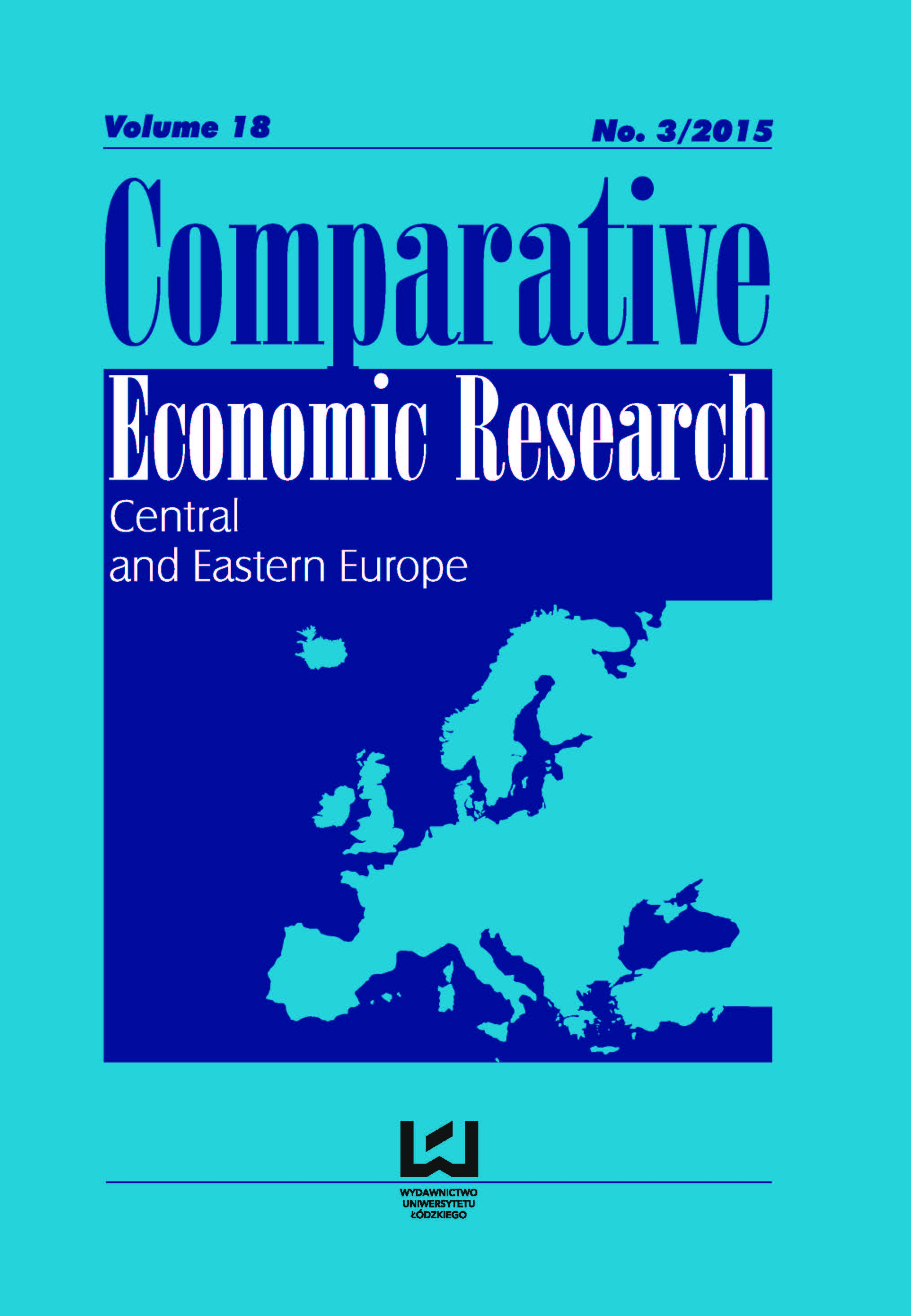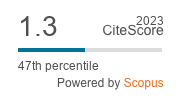Relational Resources As A Source Of Regional Competitive Advantage. Illustrated By The Examples Of The Lodzkie Voivodship And The Novosibirsk Oblast
DOI:
https://doi.org/10.1515/cer-2015-0024Keywords:
regional competitiveness, relational resources, economic institutions, regional stakeholdersAbstract
The paper aims to show relational resources as an increasingly significant factor in the competitiveness of territories. The authors argue that regions trying to increase their competitive position should undertake actions to facilitate the creation of a knowledge base and an institutional environment. This elaboration relies on the resource-based theory, used especially for analyzing relations between an organization and its environment. The paper presents theoretical considerations based on the desk research methodology and worldwide literature. Descriptive characterizations of two cases complete the presentations. The paper presents examples of two regions from different socio - economic systems, illustrating the role of relational resources in their development policy. These regions are the Lodz Voivodeship in Poland and the Novosibirsk Oblast of the Russian Federation. In their home countries, both of them had a strong economic position before the 1980's, and in the time of today’s recession are considered as regions with a slightly above-average potential for growth and good prospects for the development of their economy. Their current competitive positions in the investment market, in comparison with other regions in their countries, are also presented. The paper presents evidence that activities aimed at supporting relational resources (innovation policy, cluster development, cooperation between authorities and regional stakeholders) are conducted on a large scale. It also shows the importance given to relational resources in the developmental strategies of both regions. However, determinants resulting from the socioeconomic system and regional qualifications in the area of development management provide different opportunities to use these resources in practice.
Downloads
References
Audretsch G. B., Feldman M. (1996), Spillovers and the geography of innovation and production, ʻAmerican Economic Reviewʼ, vol. 86.
Google Scholar
Boschma R. A. (2004), Competitiveness of Regions from an Evolutionary Perspective, ʻRegional Studiesʼ, vol. 38, no 9.
Google Scholar
Capello R. (1999), Spatial transfer of knowledge in high technology milieu: learning versus collective learning process, ʻRegional Studiesʼ, vol. 33.
Google Scholar
Carlsson B., Jalobsson S., Holmen M., Rickne A. (2002), Innovation systems: analytical and methodological issues, ʻResearch Policyʼ, vol. 31.
Google Scholar
Стратегия социально-экономического развития Новосибирской области до 2025 года, http://www.nso.ru/page/2412
Google Scholar
Development Strategy for the Lodz Region for the years 2007-2013, (2006), file:///C:/Users/Wawrzyniec/Downloads/dev_strategy_lodz_region_07_20%20(3).pdf , Łódź.
Google Scholar
Edquist C. (1997), Systems of innovation approaches. Their emergence and characteristics, [in:] C.
Google Scholar
Edquist (ed.), System of Innovation. Technologies, Institutions and Organizations, Pinter, London.
Google Scholar
Федеральная служба государственной статистики (Росстат) (2014), http://www.gks.ru/ Hatch M. J. (2002), Teoria organizacji, Wydawnictwo Naukowe PWN, Warszawa.
Google Scholar
Hildebrandt A., Nowicki M., Susmarski P., Tarkowski M., Wandałowski M. (2014), Investment attractiveness of regions and sub-regions in Poland, M. Nowicki (ed.), Instytut Badań nad Gospodarką Rynkową, Warsaw.
Google Scholar
Howells J. R. L. (2002), Tacit knowledge, innovation and economic geography, ʻUrban Studiesʼ, vol. 39.
Google Scholar
Jewtuchowicz A. (2013), Terytorium i współczesne dylematy jego rozwoju, Wydawnictwo Uniwersytetu Łódzkiego, Łódź.
Google Scholar
Koliba C., Meek J. W., Zia A. (2011), Governance Networks in Public Administration and Public Policy, CRC Press-Taylor&Francis Group, Boca Raton, London, New York.
Google Scholar
Kolomak E. (2014), Эволюция пространственного распределения экономической активности в России, GSOM Emerging Market conference: business and government perspectives : International conference, (October 16-17, 2014), St. Petersburg, Russia: Conference proceedings, St. Petersburg University, Graduate School of Management, St. Petersburg.
Google Scholar
Korenik S., Zakrzewska-Półtorak A. (2011), Teorie rozwoju regionalnego - ujęcie dynamiczne, Wydawnictwo Uniwersytetu Ekonomicznego we Wrocławiu, Wrocław.
Google Scholar
Kravchenko N. A., Untura G. A. (2011), Possibilities and Prospects for Siberia’s Innovative Development, Regional Research of Russia, Vol. 1, No. 3.
Google Scholar
Local Data Bank (2013, 2014), http://stat.gov.pl/bdlen/app/strona.html?p_name=indeks
Google Scholar
Markowski T. (1996), Instytucje i instrumenty wzrostu konkurencyjności regionów, Zespół Zadaniowy ds. Rozwoju Regionalnego w Polsce, Warszawa.
Google Scholar
Markowski T. (1997), Konkurencyjność i współpraca wewnątrzregionalna podstawą nowoczesnej polityki rozwoju regionalnego, [in:] Mikołajewicz Z. (ed.), Podstawowe problemy polityki rozwoju regionalnego i lokalnego, Opole.
Google Scholar
Markowski T. (1999), Zarządzanie rozwojem miast, Wydawnictwo Naukowe PWN, Warszawa.
Google Scholar
Marszał T., Markowski T. (1998), Konkurencyjność regionów jako element polityki przestrzennej, [in:] T. Marszał (ed.), Współczesne problemy rozwoju regionalnego, KPZK PAN z. 180, Warszawa.
Google Scholar
Maskell P., Malberg A. (1999), The competitiveness of Firms and Region. ʻUbiquitification and the Importance of Localized Learningʼ, ʻEuropean Urban and Regional Studiesʼ, vol. 6, no 1.
Google Scholar
Novoselov A., Volyanskaya T. (2014), Problems of Market Infrastructure Development in the Regions of Siberia, [in:] A. S. Novoselov, V. E. Seliverstov (eds.), Local Production Systems and Regional Development, Russian Academy of Sciences - Siberian Branch, Novosibirsk.
Google Scholar
Pfeffer J., Salancik G. R. (1978), The External Control of Organizations: A resource dependence perspective, Harper & Row, New York.
Google Scholar
Rallet A. Torre A. (1999), Is geographical proximity necessary in the innovation networks in the era of the global economy?, ʻGeoJournalʼ, vol. 49.
Google Scholar
Williamson O. E. (1998), Ekonomiczne instytucje kapitalizmu, Wydawnictwo Naukowe PWN, Warszawa.
Google Scholar
Winiarski B. (1999), Konkurencyjność: Kryterium wyboru, czy kierunek strategii i cel pośredni polityki regionalnej?, [in:] M. Klamut (ed.), Konkurencyjność regionów, Wydawnictwo Akademii Ekonomicznej im. O. Langego we Wrocławiu, Wrocław.
Google Scholar
Yusupova A. (2012) Cooperation between companies: types, forms and links with innovative behaviour, [in:] D. Filipovic, A. G. Urnaut (eds.), Economic and social development, book of abstracts 1st International scientific conference, Frankfurt am Main, 12-13 April, 2012, Varazdin development and entrepreneurship agency, Faculty of Commercial and Business Sciences, Varazdin-Celje.
Google Scholar
Downloads
Published
How to Cite
Issue
Section
License

This work is licensed under a Creative Commons Attribution-NonCommercial-NoDerivatives 4.0 International License.











